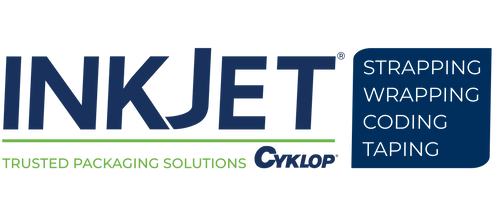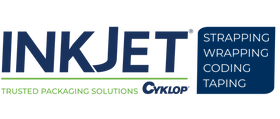Comparing Handheld Inkjet Printer Cost for Your Job ij
Just as every production facility is unique, so are its printing needs. While some manufacturing lines employ constant movement and, thus, need a continuous inkjet (CIJ) printer, other operations with intermittent packaging setups are far better off with a handheld thermal inkjet (TIJ) printer.
Designed for smaller businesses that don’t use conveyor belts, handheld printers are perfect for packing configurations that require machine mobility and ones that incorporate multiple users.
Even after determining that this style of printer is right for your business, you need to consider a few specific factors when choosing the proper make and model. So how can you be certain you’re getting a handheld printer designed to reliably produce high-contrast codes for years on end—instead of one constructed from cheap materials and prone to a multitude of difficulties and issues? This question is important because making the wrong choice equals regular maintenance, expensive repairs, or having to throw it away and start all over.
To ensure that you don’t end up purchasing one of these maintenance-budget-draining machines, we’ve outlined a few of today’s leading models as well as how they should perform within a production environment. In this breakdown, you’ll see how a slightly higher upfront cost can end up saving you major dollars down the line. But first, let’s look at the features you’ll want to be sure you’re getting in your printer.
Essential Features and Leading Handheld Printers
Certain considerations should be in mind when choosing a handheld printer for your business. Some of these features include:
-
Intuitive user interface
-
Easy-to-read display
-
Durability in relation to common workplace environmental factors (e.g., heat and humidity)
-
Battery life
-
Portability/ease of use
-
High-resolution printing
With these elements in mind, let’s take a look at one of today’s best handheld models and then contrast its qualities against what’s offered by the cheaper alternatives.
Anser U2 Smart and U2 SmartOne
Weighing in at just over a pound, the Anser U2 Smart and U2 SmartOne are incredibly mobile machines designed for versatility. Specialized to encode both porous and semi-porous substrates, the Anser series can tackle printing jobs on cardboard, plastic, and glass, making it perfect for either single-material production lines or multi-faceted packaging operations. With a memory capacity that allows for up to 999 unique messages, tasks centered around repeat encoding (e.g., lot coding, barcoding, etc.) can be completed efficiently.
While both machines can deliver high-resolution prints on the same materials, the SmartOne differs from the U2 Smart in that it is outfitted to produce one-inch printing, which is less common than the standard ½-inch printing.
-
Anser U2 Smart handheld inkjet printer cost: $1,799.00
-
Anser U2 SmartOne handheld inkjet printer cost: $2,299.00
Lower-Cost Alternatives and Their Drawbacks
Despite the Anser series’ lightweight construction, they are built to last. However, for other handheld printers, this durability is thrown to the wayside for the sake of lower costs. For instance, Meenjet’s printers carry a price of only around $600, but we believe lower prices reflect a lower level of quality of construction and materials. In fact, poorly constructed products are generally known to have repeat maintenance needs, random breakdowns, and steep drops in print clarity.
These issues equal not only costly repair bills but also sudden workflow stoppages. Over time, the initial savings from purchasing this cheaper hardware are dwarfed by both repair costs and costs associated with production interruptions. Conversely, if you select a high-quality reliable printer, like the U2 Smart or U2 SmartOne, you will benefit from the advantages outlined below.
Choosing the Right Handheld Printer Can Reduce Overall Costs
There are a few areas in which paying more upfront for a quality handheld printer is beneficial. Let’s take a look at three of the most important.
Increased Product Lifetime
High-quality handheld inkjet printers are built to last. For warehouse setups that require reliable machines, investing in a high-quality handheld inkjet printer is worth it in the long run. For example, thanks to sturdy construction, users can expect the Anser series to last four to six years—a far better lifetime value than other cheap products can offer.
Reduced Maintenance Costs
In the printing industry, we have found that low-price printers like Meenjet’s often require you to buy two—one for now and a second to use while waiting for the first to be fixed. While the Anser series’ superior build already helps avoid this concern, the need for maintenance is additionally reduced, thanks to how the machines are specifically designed to be as simple and user-friendly as possible. This is because its ink cartridge setup eliminates the need for printhead hardware. As a result, the printer has an incredibly easy installation and maintenance process: start the machine, plug in the ink cartridge, and begin printing. No experts needed.
High-Quality Printing
Along with the longevity of the Anser series comes a commitment to high print resolution. With the ability to produce codes at a DPI of 600 x 300, these handheld printers are able to compete with even top-of-the-line continuous inkjet models.
More Resources on Handheld Inkjet Printer Costs
More often than not, the old adage, “You get what you pay for,” rings true, and this is especially true when it comes to handheld inkjet printers. Although cheap models do exist and will work for a period of time, the hardware’s unreliability will eventually cause your enterprise to lose more money than what was initially saved. Conversely, by selecting a high-quality printer from the beginning, you can enjoy maximized production uptime, a long product life, years of high-quality printing, and perhaps most importantly, less stress.
To learn more about handheld inkjet printers, their associated costs, and finding the best solution for your unique needs, contact us today by dialing (800) 280-3245.



